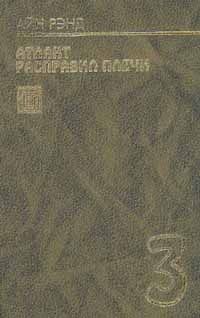Жинетт Парис - Мудрость психики. Глубинная психология в век нейронаук
Kugler P. (1990). The unconscious in a postmodern depth psychology // K. Barnaby and P. D’Acierno (Eds). C. G. Jung and the humanities: Toward a hermeneutics of culture (p. 307–317). Princeton, NJ: Princeton University Press.
Lacan J. (1978). The four fundamental concepts of psycho-analysis (J.-A. Miller, Ed. A. Sheridan, Trans.). New York: Norton.
Lacan J. (2005). Ecrits: The first complete edition in English (B. Fink, Trans.). New York: Norton.
Laing R. D. (1967). The politics of experience. New York: Pantheon Books.
Laing R. D. (1999). Self and others. New York: Routledge.
Lopez-Pedraza R. (1977). Hermes and his children. Zürich: Spring Publications.
Loraux N. (1986). The invention of Athens: The funeral oration in the classical city (A. Sheridan, Trans.). Cambridge, MA: Harvard University Press.
Loraux N. (1995). The experiences of Tiresias: The feminine and the Greek man (P. Wissing, Trans.). Princeton, NJ: Princeton University Press.
Loraux N. (2000). Born of the earth: Myth and politics in Athens
(S. Stewart, Trans.). Ithaca: Cornell University Press.
Loraux N. (2002a). The divided city: On memory and forgetting in ancient Athens (C. Pache and J. Fort, Trans.). New York: Zone Books.
Loraux N. (2002b). The mourning voice: An essay on Greek tragedy
(E. Rawling, Trans.). Ithaca: Cornell University Press.
Marcel G. and Ricoeur P. (1973). Tragic wisdom and beyond; including, conversations between Paul Ricoeur and Gabriel Marcel
(S. John and P. McCormick, Trans.). Evanston, IL: Northwestern University Press. Marlan S. (1997). Vire in the stone: The alchemy of desire. Wilmette, IL: Chiron Publications. Meade M. (1993). Men and the water of life: Initiation and the tempering of men (1st ed.). San Francisco: Harper San Francisco. Miller D. L. (1981). The new polytheism: Rebirth of the gods and goddesses. Dallas, TX: Spring Publications.
Miller D. L. (2004). Hells & Holy Ghosts: A theopoetics of Christian belief. New Orleans: Spring Journal Books (Original work published 1989).
Miller D. L. (2005a). Christs: Meditations on archetypal images in Christian theology. New Orleans: Spring Journal Books (Original work published 1981).
Miller D. L. (2005b). Three faces of God: Traces of the trinity in literature and life. New Orleans: Spring Journal Books (Original work published 1986).
Moore T. (1983). Rituals of the imagination. Dallas, TX: Pegasus Foundation.
Murdock M. (2003). Unreliable truth: On memoir and memory. New York: Seal Press.
Neumann E. (1970). The origins and history of consciousness. Princeton, NJ: Princeton University Press.
Nietzsche F. W. (2000). The birth of tragedy (W. Kaufmann, Trans.) // Basic writings of Nietzsche (p. 1–144). New York: Random House.
Noel D. C. (1990). Paths to the power of myth: Joseph Campbell and the study of religion. New York: Crossroad. Onfray M. (1993) La sculpture de soi: La morale esthetique. Paris: Grasset.
Onfray M. (1996) Le desir d’etre un volcan. Paris: Grasset.
Onfray M. (2005) Traite d’atheologie: Physique de la metaphysique. Paris: Grasset.
Otto W. F. (1954). The Homeric gods: The spiritual significance of Greek religion (M. Hadas, Trans.). New York: Pantheon.
Otto W. F. (1981). Dionysus, myth and cult (R. B. Palmer, Trans.). Dallas, TX: Spring Publications.
Pardo E. (1984). Dis-membering Dionysus: Image and theatre. Spring, p. 163–179.
Pfister O. (1917). The psychoanalytic method (C. R. Payne, Trans.). New York: Moffat Yard.
Piaget J. (1966). The child’s conception of physical causality (M. Gabain, Trans.). London: Routledge & Kegan Paul.
Ricoeur P. (1967). The symbolism of evil (E. Buchanan, Trans.). New York; Harper & Row.
Ricoeur P. (1970). Trend and philosophy: An essay on interpretation (D. Savage, Trans.). New Haven, CT: Yale University Press.
Ricoeur P. (1977). The rule of metaphor: Multi-disciplinary studies of the creation of meaning in language (R. Czerny, Trans.). Toronto: University of Toronto Press.
Ricoeur P. and Wallace M. I. (1995). Figuring the sacred: Religion, narrative, and imagination (M. I. Wallace, Ed. D. Pellauer, Trans.). Minneapolis, MN: Fortress Press.
Romanyshyn R. (2001). Mirror and metaphor: Images and stories of psychological life. Pittsburgh, PA: Trivium. (Original work published 1982).
Roscher W. H. and Hillman J. (1972). Pan and the nightmare. New York: Spring Publications. Roustang F. (1986). Dire mastery: Discipleship from Freud to Lacan
(N. Lukacher, Trans.). Washington, DC: American Psychiatric Press. Roustang F. (1983). sychoanalysis never lets go (N. Lukacher, Trans.). Baltimore: Johns Hopkins University Press. Roustang, F. (1990). The Lacanian delusion (G. Sims, Trans.). New York: Oxford University Press.
Roustang F. (2000a). How to make a paranoid laugh, or, what is psychoanalysis? (A. C. Vila, Trans.). Philadelphia: University of Pennsylvania Press.
Roustang F. (2000b). La fin de la plainte. Paris: Odile Jacob.
Rowland S. (2002). Jung: A feminist revision. Maiden, MA: Blackwell.
Roustang F. (2005). Jung as a writer (1st ed.). New York: Brunner-Routledge.
Samuels A. (1985). Jung and the post-Jungians. Boston: Routledge &Kegan Paul.
Roustang F. (1989). The plural psyche: Personality, morality and the father. New York: Routledge.
Roustang F. (1993). The political psyche. New York: Routledge.
Roustang F. (2001). Politics on the couch: Citizenship and the internal life. New York: Profile Books.
Samuels A., Shorter B. and Plaut V. (1986). A critical dictionary of Jungian analysis. New York: Routledge & Kegan Paul.
Sardello R. J. (1995). Love and the soul: Creating a future for earth (1st ed.). New York: Harper Collins.
Sardello R. J. (2001). Love and the world: A guide to conscious soul practice. Great Barrington, MA: Lindisfarne Books.
Sartre J. P. (1946) L’existentialisme est un humanisme. Paris: Nagel.
Sartre J. P. (1956). Being and nothingness: An essay on phenotneno
logical ontology. New York: Philosophical Library. Sartre J. P. (1964). Les mots. Paris: Gallimard.
Sartre J. P. (1972). The transcendence of the ego: An existentialist theory of consciousness (F. Williams and R. Kirkpatrick, Eds). New York: Octagon Books.
Schama S. (1995). Landscape and memory. New York: Knopf.
Seinfeld J. (1993). Interpreting and holding: The paternal and maternal functions of the psychotherapist. Northvale, NJ: Jason Aronson.
Slattery D. P. (2000). The wounded body: Remembering the markings of flesh. Albany, New York: SUNY Press. Slattery D. P. and Corbett L. (2000). Depth psychology: Meditations in the field. Einsiedeln: Daimon-Verlag.
Solié P. (1980). Psychanalyse et imaginal. Paris: Imago.
Spitz R. A. and Cobliner W. G. (1966). First year of life: A psychoanalytic study of normal and deviant development of object relations. New York: International Universities Press.
Stein M. (1984). Jungian analysis. Boulder, CO: Shambhala.
Stein M. (2006). The principle of individuation: Toward the development of human consciousness. Wilmette, IL: Chiron Publications.
Stern D. N. (1985). The interpersonal world of the infant; A view from psychoanalysis and developmental psychology. New York: Basic Books.
Stroud J. and Thomas G. (1982). Images of the untouched: Virginity in psyche, myth, and community. Dallas, TX: Spring Publications.
Stroud J. and Thomas G. (1995). The Olympians. Dallas, TX: Dallas Institute Publications. Szasz T. S. (1961). The myth of mental illness: Foundations of a theory of personal conduct. New York: Hoeber-Harper. Szasz T. S. (1970a). Ideology and insanity: Essays on the psychiatric dehumanization of man. Garden City, NY: Anchor Books.
Szasz T. S. (1970b). The manufacture of madness: A comparative study of the inquisition and the mental health movement. New York: Harper & Row.
Tacey D. (1998). Twisting and turning with James Hillman //
A. Casement (Ed.), Post-Jungians today: Key papers in contemporary analytical psychology (p. 215–234). New York: Routledge.
Tacey D. (2001). Jung and the new age. Philadelphia, PA: Brunner-Routledge.
Vernant J.-P. and Vidal-Naquet P. (1990). Myth and tragedy in Ancient Greece (J. Lloyd, Trans.). New York: Zone Books.
Veyne P. (1988). Did the Greeks believe in their myths?: An essay on the constitutive imagination. Chicago: University of Chicago Press.
Watkins M. (2000). Invisible guests: The development of imaginal dialogues. Woodstock, CT: Spring Publications.
Winnicott D. W. (1957). The child and the outside world. London: Tavistock Publications.
Winnicott D. W. (1965). The maturational processes and the facilitating environment: Studies in the theory of emotional development. New York: International Universities Press.
Winnicott D. W. (1971). Playing and reality. New York: Basic Books.
Zeldin T. (1995). An intimate history of humanity. New York: Harper-Collins.
Ziegler A. J. (1983). Archetypal medicine (G. V. Hartman, Trans.). Dallas, TX: Spring Publications.
Zoja L. (1995). Growth and guilt: Psychology and the limits of development. New York: Routledge.
Zoja L. (2001). The father: Historical, psychological, and cultural perspectives. Philadelphia: Brunner-Routledge.
Примечания
1 Первое издание «Диагностического и статистического руководства по психическим расстройствам» (DSM) было опубликовано в 1952 году Американской психиатрической ассоциацией. Сейчас специалисты работают с его четвертым изданием (DSM-IV).
1. Как я пробила свой толстый череп1 Я знакома с одной кошкой, которой не понравилось бы это сравнение, но поскольку она не умеет читать, мне ничего не грозит.
3. Терапия как лекарство: медицинская модель1 Она правильно поставила диагноз: DSM-IV определяет «преходящее простое моторное тиковое расстройство» (код 307.21, р. 108–116 DSM-IV) как «проявляющееся много раз в день, практически ежедневно в течение как минимум четырех недель, но не дольше, чем в течение 12 последовательных месяцев» (если оно длится дольше, оно называется «хроническим тиковым расстройством»).
2 DSM-IV, р.108. 3 DSM-IV, р. ххх. 4 Female Sexuality. New York: Evergreen Black, 1969. 5 The Manufacture of Madness. New York: Harper & Row, 1970. 6 Представление о гомосексуальности как о «болезни» сменилось более тщательно проработанным набором определений проблем, которые могут возникнуть, если индивид испытывает чувство дискомфорта в связи со своим полом. Расстройства гендерной идентичности теперь определяются как «сильная и устойчивая кросс-гендерная идентификация, сопряженная с устойчивым чувством дискомфорта от своего пола». Иными словами, если человек не переживает свою гомосексуальность как проблему, DSM не расценивает гомосексуальность саму по себе как патологию (DSM-IV, р. 535).
4. Терапия как инвестиция: экономическая модель1 В приложении 1 DSM-IV (р. 898) предпринимается попытка оценить и диагностировать «культурно обусловленные синдромы». Клиницисту предлагается принимать во внимание, «как культурные особенности влияют на итоговый диагноз и лечение», однако остается под вопросом, как применить это в системе кодирования.
2 Люси Иригарэ пришла к похожему выводу, исследуя теории женской истерии, центрального понятия в истории психоанализа. Она утверждает, что за истерией чаще всего стоит неспособность говорить словами и потому тело берет на себя выражение эмоций. Женщина, страдающая истерией, оказывается перед невозможным выбором: либо она хранит молчание, либо пользуется языком отца, и в этом случае она будет по-прежнему переживать подавление вследствие патриархальной природы языка. Тело больной истерией – единственное остающееся ей коммуникативное средство.
6. Терапия как искупление1 Вацлав Гавел, прошедший путь от политического заключенного до президента своей страны, был совершенно убежден, что здоровое чувство абсурда, особенно на политической арене, жизненно необходимо, чтобы избежать тоталитарной идеологии. «Театр абсурда» Гавела действует как противоядие против всех «измов». См. неопубликованную диссертацию: Barton David. Vaclav Havel. Pacifica Graduate Institute, 2006.
2 Одно из наиболее распространенных критических замечаний в адрес экзистенциальной психологии Сартра состоит в том, что, отрицая бессознательное, он в конце концов приходит к преувеличению значимости Эго. Я совершенно не согласна с этим клише. В моем понимании, предложенная Сартром концепция свободы, осознанности и ясности предполагает готовность видеть все то, что человек предпочел бы скрыть. Хотя ему не нравился термин «бессознательное», его понятие «плохой веры» сродни отказу исследовать более глубокую мотивацию и желанию скрыть истину за рационализацией и прочими защитными механизмами. Сартр не придает Эго слишком большое значение; правильнее сказать, что он настаивает на том, что необходимо добиваться ясности, чтобы держать Эго под контролем. Книга Ролло Мэя «Человек в поисках себя» (New York: Norton, 1953), которой зачитывалось целое поколение психологов, также содержит некоторые клише по поводу философии Сартра. Ролло Мэй писал: «Можно задаться вопросом, что будет с экзистенциализмом Сартра, если он отойдет от французского движения Сопротивления. Некоторые проницательные критики утверждают, что он может стать на службу авторитаризму; Тиллих полагает, что он может объединиться с католичеством, а Марсель предсказывает, что он перейдет на сторону марксизма». Однако все случилось совсем иначе. Бернар Анри Леви в своем обзоре философского и литературного наследия Сартра считает созданное им направление величайшим достижением ХХ века. Книга Леви называется «Le Siècle de Sartre: enquête philosophique» (Paris: Grasset, 2000). – Sartre: the philosopher of the twentieth century. Malden, MA: Polity Press, 2004.


